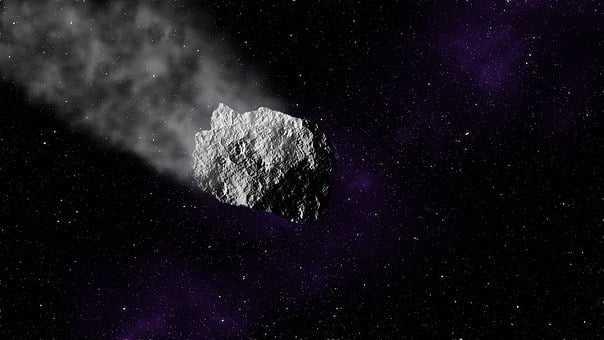Explore the World's Best Ideas
Join today and uncover 100+ curated journeys from 50+ topics. Unlock access to our mobile app with extensive features.
Asteroids
- Asteroids are rocks which revolve around the sun. They are usually too small to be considered as a planet since they can be as small as 2 meters but they can be as big as 940 kilometers across.
- Asteroids are also known as planetoids or minor planets. They are often irregularly shaped but some tend to be almost spherically-shaped. They have pitted surfaces and are covered in dust.
- They can be dangerous because many have hit Earth in the past and it's likely that it can happen again.
79
279 reads
The formation of asteroids
Asteroids are what's left after the formation of our solar system from billions of years ago.
It is believed that the reason why they were formed were because of the birth of Jupiter. Its birth hindered any planetary bodies to form in the space between Mars and Jupiter, which resulted to the small objects that were present to crash onto each other and fragment themselves.
The two theories that back this up are the Nice model and the Grand Tack.
49
138 reads
Categorizing asteroids
The different types of asteroids are:
- Main belt asteroids - Lies in between Mars and Jupiter; holds more than 200 asteroids
- Trojan asteroids - found outside the main belt; usually orbits larger planets
- Near-Earth asteroids (NEAs) - circles close to earth; there are three types of NEAs, Apollo, Aten, and Atira
- The C-type - carbonaceous asteroids
- The S-type - silicaceous asteroids
- The M-type - metallic asteroids
- The V-type - has a basaltic and volcanic crust
49
122 reads
Asteroids: impact with Earth
- If an asteroid crashes through Earth's surface, it is then called a meteorite.
- For an asteroid to cause a global panic it has to be more than a quarter-mile wide, an impact from an asteroid this size would cause dust to raise into the atmosphere and thus creating a "nuclear winter"
- However, smaller asteroids are believed to strike Earth every 1,000-10,000 years; and the most dangerous asteroids are extremely rare.
51
127 reads
Asteroid defense
We can observe an asteroid by observing them through a radar. The radar can reveal its size, shape, and whether it is two objects.
In the unlikely event that an asteroid is deemed a threat, NASA has inventions to effectively diffuse them such as:
- Kinetic Impactor - a spacecraft that slams into the asteroid to move it's orbit; and
- Gravity Tractor - a spacecraft that remains near the asteroid until it has its own gravity to gradually alter its path
51
105 reads
Asteroids helped create life
Amusingly, the collisions that could possibly bring death to us may be the reason we are alive today.
When Earth was formed it was unable to support growth and desolate. Asteroid and comet collisions may have delivered the water-ice and other carbon-based molecules that allowed the planet to evolve and support life after billions of years.
51
104 reads
The discovery and naming of asteroids
- In 1801, Giuseppe Piazzi discovered the first and largest asteroid, Ceres, orbiting between Mars and Jupiter (Today it is classified as both an asteroid and a dwarf planet)
- In 1802, William Herschel coined the term "asteroid"
- In 1851 - 15 new asteroids were discovered and the naming process changed to include with numbers. For example: (1) Ceres
Fun fact: There is an asteroid named after Mr. Spock of Star Trek.
51
86 reads
Asteroid exploration timeline
- 1991 - NASA's Galileo was able to take close-up images of asteroids
- 1994 - Discovered the first moon to orbit an asteroid
- 2001 - Landed a spacecrafts successfully on Near-Earth Asteroid Eros
- 2006 - Japan's Hayabusa was the first spacecraft to land on and take off from an asteroid
- 2011 - NASA's Dawn mission was the first spacecraft to visit Vesta and Ceres
- 2016 - NASA launched an explorer to the asteroid Bennu
- 2017 - NASA's Discovery Program will launch two new projects: Lucy and Psyche
53
122 reads
IDEAS CURATED BY
Mohamed Byrne's ideas are part of this journey:
Learn more about technologyandthefuture with this collection
How to create a cosy and comfortable home environment
How to cultivate a sense of gratitude and contentment
The benefits of slowing down and enjoying simple pleasures
Related collections
Similar ideas
5 ideas
4 Myths About Juice Cleansing | Live Science
livescience.com
3 ideas
5 ideas
Who Invented the Refrigerator? | Live Science
livescience.com
Read & Learn
20x Faster
without
deepstash
with
deepstash
with
deepstash
Personalized microlearning
—
100+ Learning Journeys
—
Access to 200,000+ ideas
—
Access to the mobile app
—
Unlimited idea saving
—
—
Unlimited history
—
—
Unlimited listening to ideas
—
—
Downloading & offline access
—
—
Supercharge your mind with one idea per day
Enter your email and spend 1 minute every day to learn something new.
I agree to receive email updates

